Wedding rings hold great significance as a symbol of love, commitment, and marital union. While the tradition of exchanging wedding rings has deep historical roots, it is essential to examine when men started wearing wedding rings specifically.
The origins of wedding rings can be traced back thousands of years, with evidence of their use in ancient civilizations such as Egypt and ancient Rome. Historical records show that rings were often worn by brides to represent their marital status and that the circular shape symbolized eternity and never-ending love.
Early traditions and customs surrounding wedding rings mainly focused on women wearing them. However, the concept of men wearing wedding rings began to evolve as societal norms and gender roles changed. Traditionally, women would wear engagement rings, while men received little to no symbolic jewelry.
The shift towards men wearing wedding rings gained traction during the early 20th century. This change can be attributed to multiple factors, including evolving cultural and societal attitudes towards gender equality and the influence of popular culture. Men wearing wedding rings became a visible symbol of commitment and partnership, emphasizing the importance of mutual love and devotion within a marriage.
The trends in men's wedding rings have also seen variations in designs. Traditional designs often featured simpler bands made of gold or other precious metals. However, contemporary trends have introduced a wide range of options, including unique styles and materials to cater to diverse preferences.
Cultural and regional differences also play a role in men's wedding ring traditions. In some cultures, such as Western societies, it is customary for both men and women to wear wedding rings. In contrast, other cultures may have different customs, making men's ring-wearing less common or even nonexistent.
Key takeaway:
- Wedding rings have significant cultural and symbolic importance.
- The tradition of wearing wedding rings dates back centuries, with early customs varying across cultures.
- Men started wearing wedding rings more prominently as societal norms and gender roles evolved.
- Cultural attitudes and popular culture have influenced the rise and variations in men's wedding ring trends.
What is the significance of wedding rings?
Wedding rings hold great significance in many cultures and traditions around the world. They serve as symbolic representations of love, commitment, and unity between two individuals. In various cultures and belief systems, wedding rings have cultural and religious significance, with their designs, materials, and associated rituals varying. Wearing a wedding ring is a public declaration of one's marital status, signaling to others that the individual is committed and unavailable for romantic relationships. The circular shape of wedding rings symbolizes eternity and the unending nature of love, representing the everlasting bond between a married couple. Furthermore, wedding rings often carry sentimental value as cherished family heirlooms, connecting loved ones and their histories. Beyond its emotional and cultural value, a wedding ring also provides emotional and psychological benefits, boosting one's emotional well-being and providing a sense of security and belonging. It serves as a tangible reminder to foster a healthy and thriving relationship. Ultimately, wedding rings carry deep significance as symbols of love, commitment, and unity within a marriage, constantly reminding the couple of their vows and the love they share. When selecting a wedding ring, it is essential to consider personal style, lifestyle, and budget, ensuring that the chosen ring reflects individuality and stands the test of time.
The Origins of Wedding Rings
Let's dive into the captivating world of wedding rings and explore their fascinating origins. Uncovering the historical background and delving into early traditions and customs, this section will give you an insightful glimpse into the rich tapestry of significance that surrounds these symbolic bands of love. So, get ready to journey through time and discover the captivating stories behind the beloved tradition of wearing wedding rings.
Historical background on wedding rings
"Wedding rings have a rich historical background that dates back thousands of years. The historical background on wedding rings reveals the deep-rooted significance these small bands of metal hold. They have been used by various cultures around the world to symbolize the bond of marriage and commitment between couples. Here is a closer look at the historical background on wedding rings:
1. Ancient Egypt: The tradition of exchanging rings as a symbol of love and commitment can be traced back to ancient Egypt. Egyptians believed that the circle shape of a ring represented eternity, and they wore it on the fourth finger of the left hand, as they believed it had a vein that directly connected to the heart.
2. Ancient Rome: The Romans also adopted the tradition of wearing wedding rings. They usually made them from iron, representing strength and permanence. Over time, this tradition evolved, and rings started to be made from more precious materials like gold.
3. Ancient Greece: In ancient Greek culture, rings were given as a sign of betrothal. The groom would present a ring to the bride as a symbol of his commitment. These rings were often adorned with intricate designs and gemstones.
4. Christian Influence: The tradition of exchanging rings during wedding ceremonies was further popularized by the Christian Church in the Middle Ages. Rings became an important part of the marriage ritual and were blessed by the clergy.
5. Evolution of Styles: As time went on, wedding ring styles and designs evolved. The use of diamonds and other gemstones became more common, symbolizing the value and uniqueness of the couple's love and commitment.
6. Symbol of Status: In some cultures, wedding rings were not only a symbol of love but also a status symbol. The size and material of the ring were often indicators of the couple's wealth and social standing.
7. Modern Traditions: Today, wedding rings are an integral part of wedding ceremonies in many cultures worldwide. The design and materials used for rings vary based on cultural and personal preferences, but the underlying symbolism of love and commitment remains consistent.The historical background on wedding rings reveals the deep-rooted significance these small bands of metal hold. They have been a symbol of love, commitment, and eternity throughout various cultures and time periods. The tradition of wearing wedding rings continues to thrive today, embodying the enduring bond between married couples
.
Early traditions and customs
Surrounding wedding rings, early traditions and customs hold great significance and provide insight into the rich history of this timeless symbol of love and commitment.
1. Ancient Egypt: In early Egyptian culture, wedding rings were made from woven reeds and placed on the fourth finger of the left hand, believed to have a direct connection to the heart. These early traditions symbolized eternity and the unbreakable bond between a couple.
2. Ancient Rome: Early traditions and customs in Ancient Rome considered the ring to be a symbol of ownership, signifying that a woman was taken and belonged to her husband. These practices influenced the concept of betrothal rings and eventually evolved into the modern wedding ring.
3. Medieval Europe: It was during this period that early traditions and customs began to include engraving wedding rings with inscriptions. Couples would often incorporate quotes, names, or dates that held personal meaning to them, further solidifying their commitment.
4. Renaissance Era: Early traditions and customs during the Renaissance period saw rings becoming more ornate and elaborate. They were adorned with precious gemstones and intricate designs, reflecting the growing emphasis on love and romance.
5. Victorian Era: In the Victorian Era, diamonds gained popularity as the stone of choice for engagement rings. Early traditions and customs of this time believed that diamonds symbolized purity, innocence, and everlasting love, leading to the rise of diamond-set wedding rings.
6. Cultural and Religious Customs: Different cultures and religions have their own unique early traditions and customs. For example, in Hindu weddings, rings are exchanged during the ceremony, while in Jewish weddings, a plain gold band is often used to symbolize the unification of the couple.
7. Symbolism and Meaning: The circular shape of wedding rings represents eternity, with no beginning or end. It signifies the eternal love and commitment shared between spouses. The act of wearing the ring on the left-hand ring finger is believed to have originated from the belief in the "vena amoris" or the vein of love, which was thought to run directly from this finger to the heart. Understanding the early traditions and customs associated with wedding rings adds depth and meaning to this cherished symbol of love. Over time, these traditions have evolved and been influenced by cultural, societal, and personal factors. Today, wedding rings continue to serve as a powerful reminder of the commitment and bond shared between couples.
When Did Men Start Wearing Wedding Rings?
When it comes to wedding traditions, one question often arises: when did men start wearing wedding rings? In this exploration, we'll dive into the fascinating history surrounding this custom. From traditional gender roles and wedding symbols to the evolution of societal norms, we'll uncover the stories and influences behind the practice of men wearing wedding rings. Get ready to unravel the intriguing journey of this beloved symbol of commitment and love.
Traditional gender roles and wedding symbols
Traditional gender roles and wedding symbols have played a significant role in shaping the tradition of men wearing wedding rings. Throughout history, wedding rings have been primarily associated with women, symbolizing their marital status and fidelity. In traditional gender roles, women were usually expected to wear wedding rings as a symbol of their commitment to their husbands. The ring represented their status as married women and served as a visible symbol of their fidelity. Men, on the other hand, were not typically expected to wear wedding rings, as their commitment was seen as more evident through their role as providers and protectors. As society has progressed, so have gender roles and expectations. The idea of men wearing wedding rings began to gain popularity in the mid-20th century, influenced by cultural shifts towards equality and the recognition of men's emotional investment in marriage. Men started to embrace the symbol of a ring to demonstrate their commitment and to signal their fidelity to their spouses. The rise of feminism and the rejection of traditional gender roles have also contributed to men wearing wedding rings. Many couples now view marriage as a partnership of equals, and both spouses choose to wear wedding rings as a symbol of their mutual commitment and love. Men wearing wedding rings provides a visual representation of equality within a marriage. It signifies the breaking down of traditional gender norms and serves as a reminder of the shared commitment between partners. It also helps to cultivate a sense of unity and connection within the relationship, as both partners proudly display their marital status through their rings. Fact: Interestingly, it wasn't until World War II that men wearing wedding rings became more widespread in the United States. The practice gained popularity as soldiers going off to war started wearing rings as a sentimental reminder of their loved ones back home. This trend continued even after the war ended, leading to the normalization of men wearing wedding rings in American society.
Evolution of societal norms
Societal norms have evolved significantly when it comes to men wearing wedding rings. The evolution of societal norms has played a crucial role in this change. Over time, the acceptance of men wearing wedding rings has grown, reflecting a more inclusive and egalitarian society. In the past, it was uncommon for men to wear wedding rings, as this symbol of marital commitment was primarily associated with women. However, the idea that men should not wear jewelry, including wedding rings, has been challenged and reevaluated. Instead, modern society recognizes that both men and women can express their commitment and love through the wearing of a ring. Popular culture has also influenced the acceptance of men wearing wedding rings. Celebrities and public figures have played a significant role in normalizing this practice. Many high-profile individuals, such as actors and athletes, proudly display their wedding rings, showcasing their commitment to their partners. This has had a profound impact on society's perception and acceptance of men wearing wedding rings. However, it is important to note that regional and cultural differences still exist when it comes to men wearing wedding rings. In some cultures, wearing a wedding ring is still more traditional for women than men. Even in these contexts, societal norms are gradually shifting, and more men are choosing to wear wedding rings as a symbol of their commitment. The positive development of societal norms regarding men wearing wedding rings allows individuals to express their commitment and love, regardless of their gender. As we continue to progress, it is likely that more men will choose to proudly wear their wedding rings as a symbol of their marital commitment.
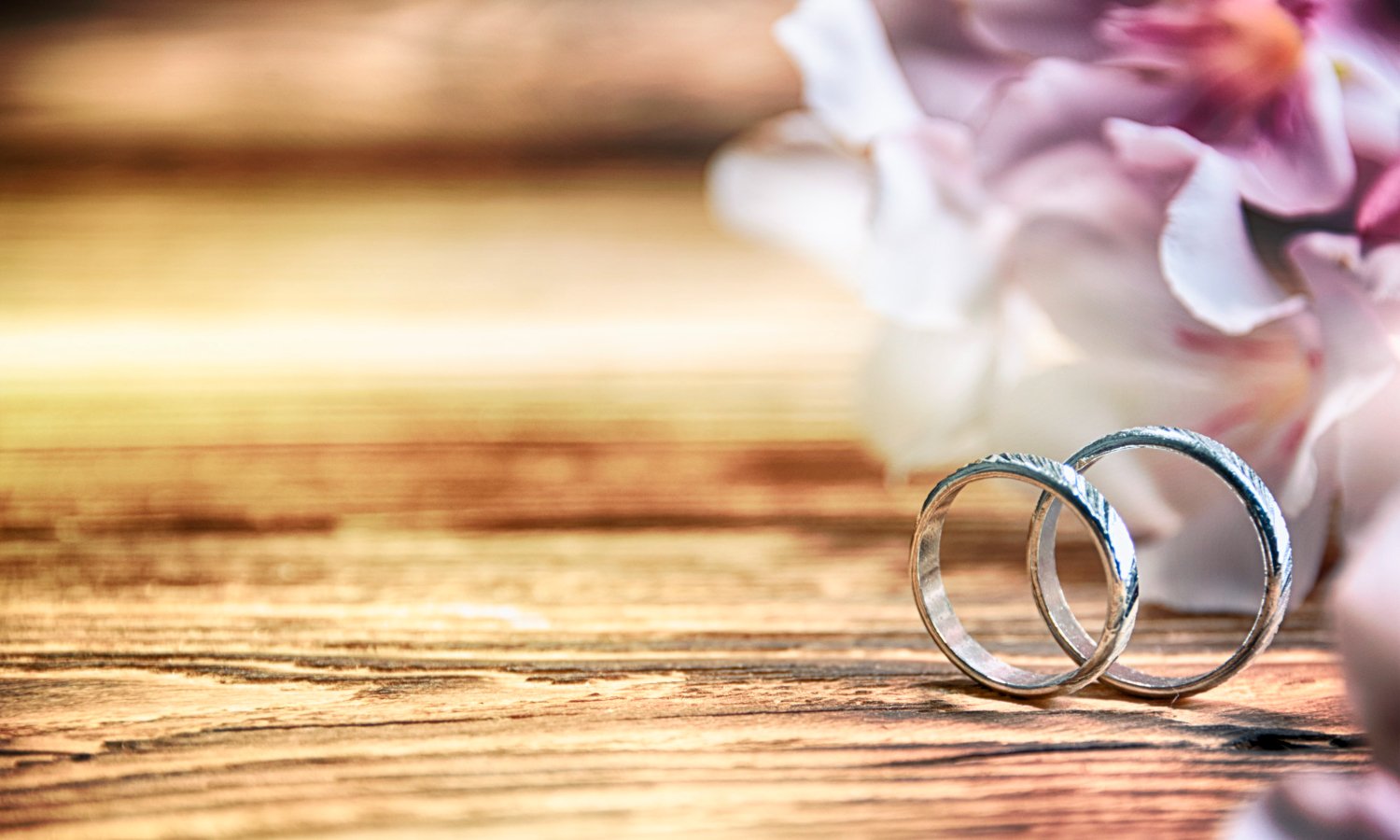
Factors Influencing Men Wearing Wedding Rings
The practice of men wearing wedding rings has evolved over time, influenced by various factors that shape cultural and societal norms. In this section, we'll explore some key factors that have impacted this tradition. From changing attitudes in society to the influence of popular culture, we'll uncover the intriguing forces that have shaped the trends surrounding men's wedding rings. Prepare to be fascinated as we delve into the cultural tapestry and uncover the reasons behind this timeless tradition.
Changing cultural and societal attitudes
have played a significant role in the tradition of men wearing wedding rings. In the past, it was largely uncommon for men to wear wedding rings, as this symbol was primarily associated with women. Over time, cultural and societal attitudes have shifted, leading to an increase in men embracing this tradition. Historically, wedding rings were seen as a symbol of ownership and fidelity, primarily worn by women to signify their commitment to their husbands. Men, on the other hand, were not expected to display their marital status in the same way. This gender disparity in wearing wedding rings reflected societal norms and expectations surrounding masculinity and femininity. As cultural attitudes began to evolve, the significance of wedding rings also started to change. The feminist movement of the 20th century challenged traditional gender roles and paved the way for greater equality in relationships. This shift in attitudes towards gender roles played a pivotal role in men wearing wedding rings, as it symbolized their commitment and equal partnership within the marriage. In recent years, there has also been a growing emphasis on individuality and self-expression, which has further influenced the cultural acceptance of men wearing wedding rings. Many men now see wedding rings as a way to express their love and devotion, just as women have done for centuries. Popular culture has also played a role in shaping societal attitudes towards men wearing wedding rings. Influential figures in the entertainment industry, such as celebrities and athletes, have helped normalize this tradition by proudly displaying their wedding bands. This visibility has sparked a trend and encouraged more men to embrace the idea of wearing a symbol of their commitment. Changing cultural and societal attitudes have paved the way for men to wear wedding rings as a symbol of their love and commitment. It is no longer seen as a strictly feminine practice, but rather as a personal choice that reflects the beliefs and values of the individual and their relationship. As more men embrace this tradition, it continues to challenge and redefine societal norms surrounding gender roles and relationships.
Influence of popular culture
Influence of Popular Culture on Men's Wedding Ring Trends Popular culture holds a significant influence over various aspects of our lives, and this influence extends to the tradition of men wearing wedding rings. In recent years, the influence of popular culture on men wearing wedding rings has been steadily growing, challenging traditional gender roles and shaping societal norms. One impactful way that popular culture influences the trend of men wearing wedding rings is through celebrity endorsements. Famous actors, musicians, and athletes often proudly showcase their wedding rings in the media, normalizing and encouraging the concept for men. The sight of influential figures confidently wearing their wedding rings can affect how masculinity is perceived and contribute to a shift in societal attitudes. Television shows and movies also play a vital role in shaping the influence of popular culture on men's wedding ring trends. Characters portrayed in popular media wearing wedding rings can lead to increased acceptance and adoption of the practice among men. It generates a sense of significance and commitment associated with wedding rings, making them more desirable and fashionable. The rise of social media has amplified the impact of popular culture on men wearing wedding rings. Platforms like Instagram and Pinterest showcase diverse wedding ring styles, celebrity weddings, and relationship milestones, fostering a culture of sharing and admiration. Exposure to various designs and personal stories encourages men to actively participate in this tradition and express their commitment through wearing a wedding ring. Furthermore, popular culture's influence on men wearing wedding rings extends to the realm of fashion and style. As fashion trends evolve, jewelry designers are introducing more options tailored specifically to men. Contemporary designs that incorporate masculine elements like titanium or tungsten bands have gained popularity, making men more inclined to wear wedding rings as a meaningful fashion statement. The influence of popular culture on men wearing wedding rings is undeniably substantial. Through celebrity endorsements, media representation, social media platforms, and evolving fashion trends, popular culture has played a significant role in normalizing and promoting the practice among men. As societal attitudes and traditional gender roles continue to evolve, it is highly likely that the influence of popular culture on men's wedding ring trends will continue to grow. While considering your own wedding ring choices, it is crucial to remember that popular culture should not be the sole determining factor. Ultimately, the significance of a wedding ring lies in the personal commitment and symbol of love it represents. Choose a ring that aligns with your style preferences and carries sentimental value for you and your partner, irrespective of current trends.
Variations in Men's Wedding Ring Trends
When it comes to men's wedding ring trends, there are fascinating variations that cater to different styles and cultural backgrounds. From traditional to contemporary designs, each showcases its own unique charm. Cultural and regional differences play a significant role in shaping these trends. So, let's dive in and explore the world of men's wedding rings, from the timeless allure of traditional designs to the contemporary fashion statements, while also discovering how cultural influences add an extra layer of diversity to this intricate art form.
Traditional vs. contemporary designs for men
When it comes to men's wedding ring designs, there is a wide range of options available, from traditional to contemporary designs. Here are some key factors to consider when choosing between traditional and contemporary designs:
- Traditional vs. Contemporary Styles: Traditional designs for men's wedding rings often feature classic elements such as a plain metal band or a simple pattern engraved on the surface. These traditional designs exude a timeless and elegant appeal. On the other hand, contemporary designs offer more versatility and creativity. They may include unique shapes, mixed metals, textured surfaces, or even gemstone accents. Contemporary designs allow men to express their individuality and embrace modern aesthetics.
- Metal: Traditional designs often lean towards traditional metals, such as yellow gold or platinum. These metals are known for their durability and classic beauty. However, contemporary designs offer a wider array of metal choices. Men can opt for white gold, rose gold, titanium, or even alternative metals like tungsten or cobalt. These metals give a sleek and modern look to the ring.
- Detailing: Traditional designs tend to have minimal detailing or engravings, focusing on the simplicity of the band. In contrast, contemporary designs may incorporate more intricate and unique detailing. This could include handcrafted patterns, filigree work, or geometric shapes. These details provide an added layer of personality and uniqueness to the ring.
- Comfort: Traditional designs usually prioritize comfort with a smooth and rounded inner surface. This ensures a comfortable fit for everyday wear. However, contemporary designs also take comfort into consideration, using innovative materials and ergonomic designs to maximize comfort. These designs may have curved or beveled edges, allowing for a more comfortable feel on the finger.
- Personal Preference: Choosing between traditional and contemporary designs ultimately comes down to personal preference. Some men prefer the timeless elegance of a traditional design, appreciating its simplicity and understated beauty. Others may prefer the boldness and modernity of contemporary designs, embracing the opportunity to showcase their unique style.
Whether you choose a traditional or contemporary design for your men's wedding ring, the most important aspect is that it reflects your personal taste and symbolizes your commitment. It should be a ring that you will be proud to wear every day and cherish for a lifetime.
Cultural and regional differences
In discussing the cultural and regional differences surrounding men's wedding ring trends, it is important to consider the diverse practices and customs that exist across different cultures and regions. These cultural and regional differences can be shaped and redefined by individual choices and acts of love, as exemplified in the true story of Raj and Maya in a small village in India. Raj and Maya decided to get married, and in their region, women typically wear elaborate wedding rings while men do not typically wear wedding rings at all. However, they wanted to challenge this tradition and embrace a more modern approach. They chose to exchange simple, matching bands that symbolized their commitment and unity. During their wedding ceremony, Raj surprised Maya by presenting her with a beautiful ring, defying the cultural practice of women exclusively wearing wedding rings. Maya was deeply touched by this gesture, which symbolized equality in their relationship. In return, Maya had prepared a wedding ring for Raj, challenging the gender roles and setting a new precedent in their community. Their act of exchanging rings had a significant impact on their community. More couples in the village began to follow their lead, and over time, the practice of men wearing wedding rings gradually gained acceptance. This true story highlights the power of individual choices in shaping cultural and regional differences. These differences in cultural and regional practices around men's wedding rings reflect the diversity of traditions and beliefs regarding marriage and commitment. It is important to respect and appreciate these variations when considering the significance of wedding rings in different parts of the world. Despite the variations, the underlying significance of commitment and unity remains universal.
Some Facts About When Did Men Start Wearing Wedding Rings:
- ✅ Men traditionally wear wedding rings as a symbol of love and commitment to their spouses. (Source: Our Team)
- ✅ The tradition of men wearing wedding rings dates back thousands of years, with ancient Egyptian men exchanging rings made of twigs and plants. (Source: Our Team)
- ✅ In ancient Rome, men gave their wives iron wedding bands as a symbol of ownership. (Source: Our Team)
- ✅ During the Renaissance, more romantic traditions emerged, with couples exchanging rings made of light metal with engravings. (Source: Our Team)
- ✅ The World Wars played a significant role in popularizing the modern wedding ring for men. (Source: Our Team)
Frequently Asked Questions
When did men start wearing wedding rings?
Men have been wearing wedding rings for thousands of years. In ancient Egypt, men exchanged rings made of twigs and plants, while in ancient Rome, iron wedding bands were given as a symbol of ownership. The tradition of men wearing wedding rings became more mainstream in the mid-20th century, especially after World War II when soldiers wore rings as a reminder of their loved ones back home.
Why do some men choose not to wear wedding rings?
There are various reasons why some men choose not to wear wedding rings. It can simply be a personal preference or a dislike for jewelry. Additionally, some men speculate that not wearing a ring may make them appear single and attract potential partners. However, etiquette experts argue that a wedding ring does not guarantee fidelity and that more primitive urges play a role in infidelity.
What is the significance of men wearing wedding rings?
Men wearing wedding rings is a symbol of love and commitment to their spouses. It signifies their marital status and serves as a constant reminder of their marriage vows. In recent times, wedding rings have also become a fashionable accessory, with various styles available to suit individual preferences.
Apart from wedding rings, what other types of jewelry do men wear?
In recent years, men have started wearing more jewelry as part of fashion trends. This includes accessories such as bracelets, necklaces, earrings, and even unique materials like handcrafted wooden rings or those featuring dinosaur bone. The trend of men wearing jewelry started in the 60s and 70s with the influence of Continental fashion.
How has the tradition of men wearing wedding rings evolved?
Historically, wedding rings were only worn by brides as a symbol of ownership by their husbands. However, with the advancement of women's rights, the tradition has evolved, and now both partners exchange rings as a symbol of their mutual love and commitment. The popularity of men's wedding rings has also increased over time, showcasing a more equal representation of married status.
Does Prince William not wearing a wedding ring signify a change in tradition?
No, Prince William not wearing a wedding ring is not a new or unique practice within his family. His grandfather, the Duke of Edinburgh, also does not wear one. The decision of whether or not to wear a wedding ring is a personal choice, and it is unlikely to start a trend among men as there is not enough interest among them.
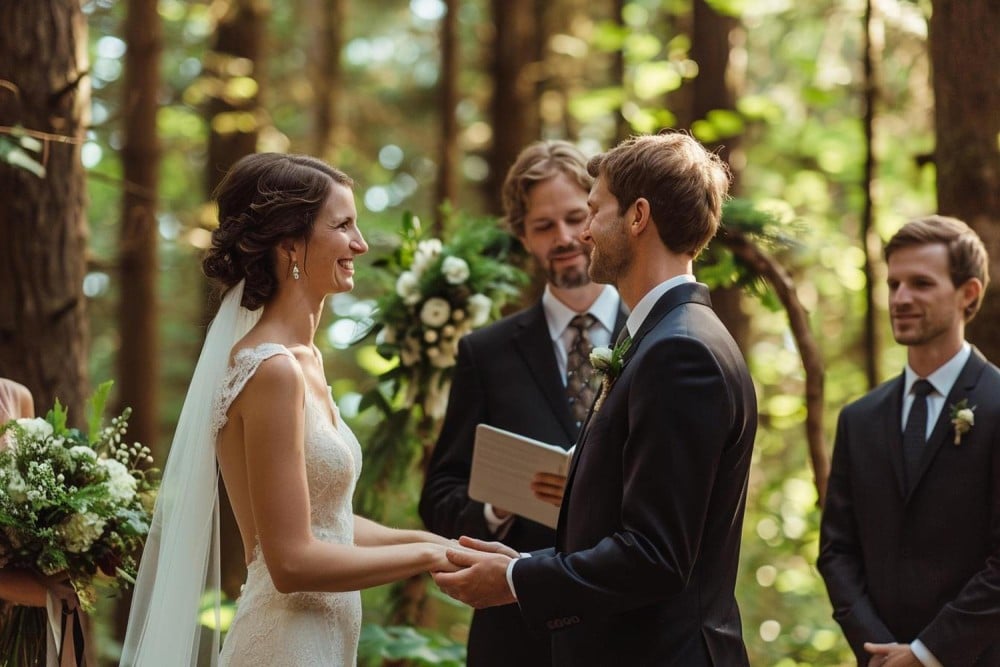 How to become a wedding officiant in tennessee ?Read more
How to become a wedding officiant in tennessee ?Read more How to bustle a tulle wedding dress ?05/21/2024Posted in: Wedding Fashion & StyleRead more
How to bustle a tulle wedding dress ?05/21/2024Posted in: Wedding Fashion & StyleRead more Planning Your Honeymoon Tips for an Unforgettable Trip05/20/2024Posted in: Wedding PreparationsRead more
Planning Your Honeymoon Tips for an Unforgettable Trip05/20/2024Posted in: Wedding PreparationsRead more The Dos and Donts of Wedding Guest Etiquette05/16/2024Posted in: Wedding Traditions & EtiquetteRead more
The Dos and Donts of Wedding Guest Etiquette05/16/2024Posted in: Wedding Traditions & EtiquetteRead more The Importance of PreWedding Counseling What You Should Know05/13/2024Posted in: Wedding PreparationsRead more
The Importance of PreWedding Counseling What You Should Know05/13/2024Posted in: Wedding PreparationsRead more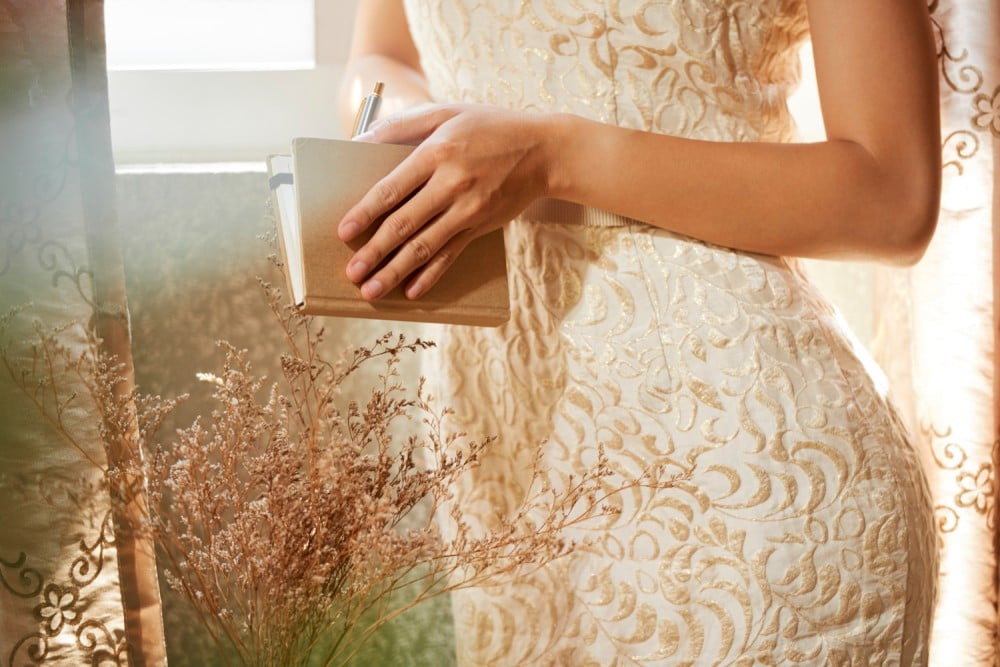 Can I wear beige to a wedding ?11/14/2023Posted in: Wedding Fashion & StyleOne of the most common questions when it comes to wedding guest attire is whether it's appropriate to wear beige to a...Read more
Can I wear beige to a wedding ?11/14/2023Posted in: Wedding Fashion & StyleOne of the most common questions when it comes to wedding guest attire is whether it's appropriate to wear beige to a...Read more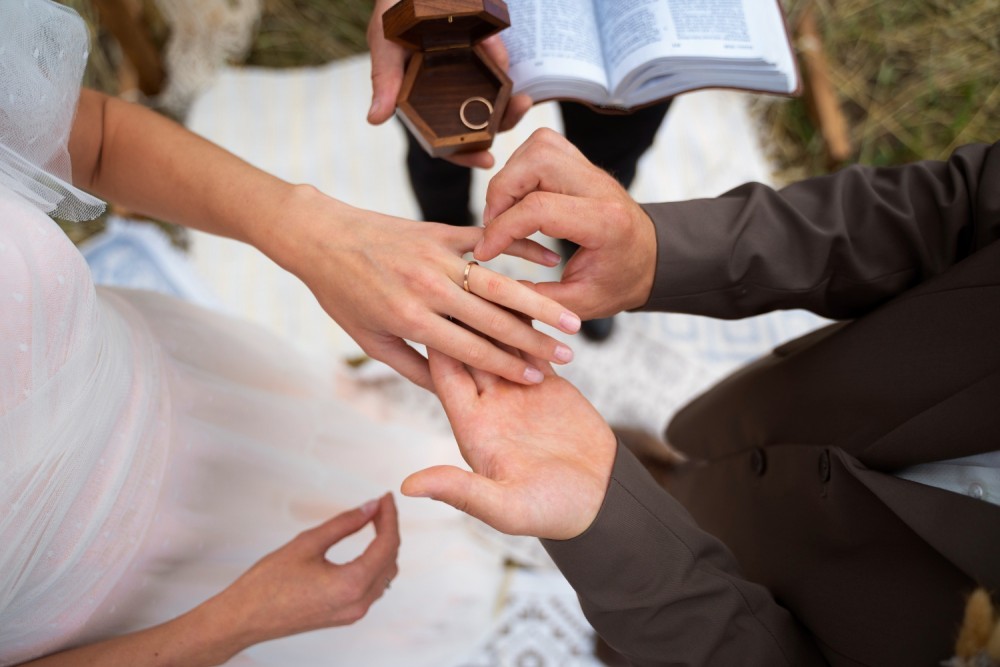 Do Jehovah Witnesses celebrate weddings ?02/29/2024Posted in: Wedding Traditions & EtiquetteJehovah’s Witnesses are known for their distinctive beliefs and practices, but what about weddings? In this...Read more
Do Jehovah Witnesses celebrate weddings ?02/29/2024Posted in: Wedding Traditions & EtiquetteJehovah’s Witnesses are known for their distinctive beliefs and practices, but what about weddings? In this...Read more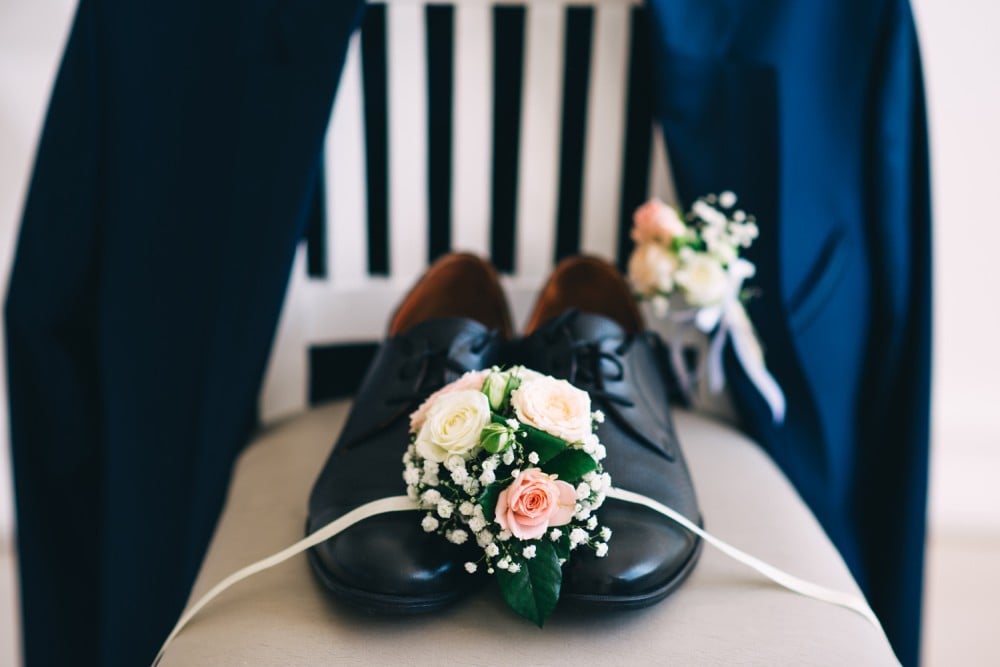 What color shoes with navy dress for Wedding ?08/20/2023Posted in: Wedding Fashion & StyleMatching shoe color with navy dress When teaming shoe color with a navy dress, it's essential to decide on a hue...Read more
What color shoes with navy dress for Wedding ?08/20/2023Posted in: Wedding Fashion & StyleMatching shoe color with navy dress When teaming shoe color with a navy dress, it's essential to decide on a hue...Read more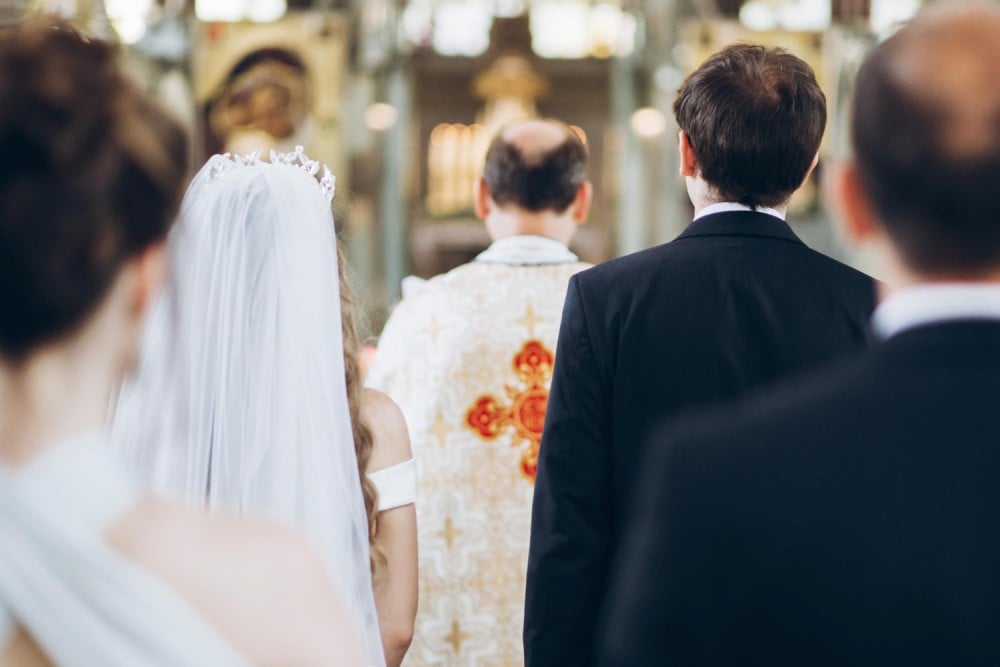 What to wear to a Church Wedding ?09/04/2023Posted in: Wedding Fashion & StyleAre you attending a church wedding and unsure about the dress code? Our latest article provides a deep dive into the...Read more
What to wear to a Church Wedding ?09/04/2023Posted in: Wedding Fashion & StyleAre you attending a church wedding and unsure about the dress code? Our latest article provides a deep dive into the...Read more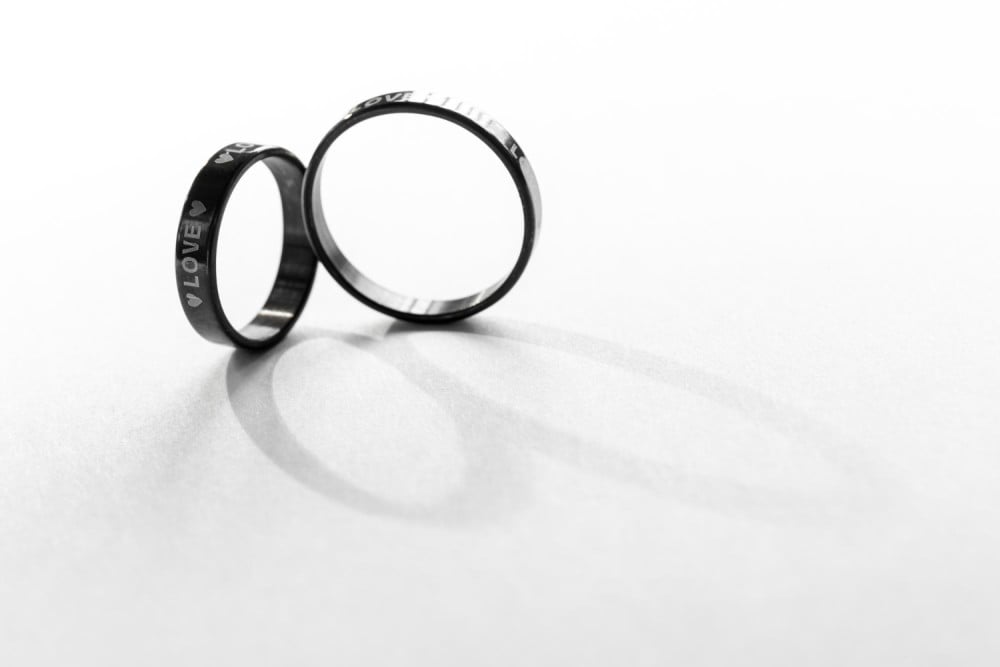 What does a black wedding ring mean ?06/12/2023Posted in: Miscellaneous Wedding AspectsWedding rings are a traditional symbol of love and commitment, but their style and design can vary greatly. In recent...Read more
What does a black wedding ring mean ?06/12/2023Posted in: Miscellaneous Wedding AspectsWedding rings are a traditional symbol of love and commitment, but their style and design can vary greatly. In recent...Read more How to become a wedding officiant in tennessee ?06/27/2024Looking to become a wedding officiant in Tennessee but not sure where to start? This comprehensive guide will walk...Read more
How to become a wedding officiant in tennessee ?06/27/2024Looking to become a wedding officiant in Tennessee but not sure where to start? This comprehensive guide will walk...Read more How to bustle a tulle wedding dress ?05/21/2024Posted in: Wedding Fashion & StyleAre you a bride-to-be with a tulle wedding dress and wondering how to bustle it for the big day? Look no further!...Read more
How to bustle a tulle wedding dress ?05/21/2024Posted in: Wedding Fashion & StyleAre you a bride-to-be with a tulle wedding dress and wondering how to bustle it for the big day? Look no further!...Read more Planning Your Honeymoon Tips for an Unforgettable Trip05/20/2024Posted in: Wedding PreparationsPlanning your honeymoon is an exciting and important step in beginning your life together as a married couple. From...Read more
Planning Your Honeymoon Tips for an Unforgettable Trip05/20/2024Posted in: Wedding PreparationsPlanning your honeymoon is an exciting and important step in beginning your life together as a married couple. From...Read more The Dos and Donts of Wedding Guest Etiquette05/16/2024Posted in: Wedding Traditions & EtiquettePlanning to attend a wedding soon? Make sure you brush up on your wedding guest etiquette to ensure you have a great...Read more
The Dos and Donts of Wedding Guest Etiquette05/16/2024Posted in: Wedding Traditions & EtiquettePlanning to attend a wedding soon? Make sure you brush up on your wedding guest etiquette to ensure you have a great...Read more The Importance of PreWedding Counseling What You Should Know05/13/2024Posted in: Wedding PreparationsAre you and your partner considering pre-marriage counseling but not sure what to expect? This article is here to...Read more
The Importance of PreWedding Counseling What You Should Know05/13/2024Posted in: Wedding PreparationsAre you and your partner considering pre-marriage counseling but not sure what to expect? This article is here to...Read more








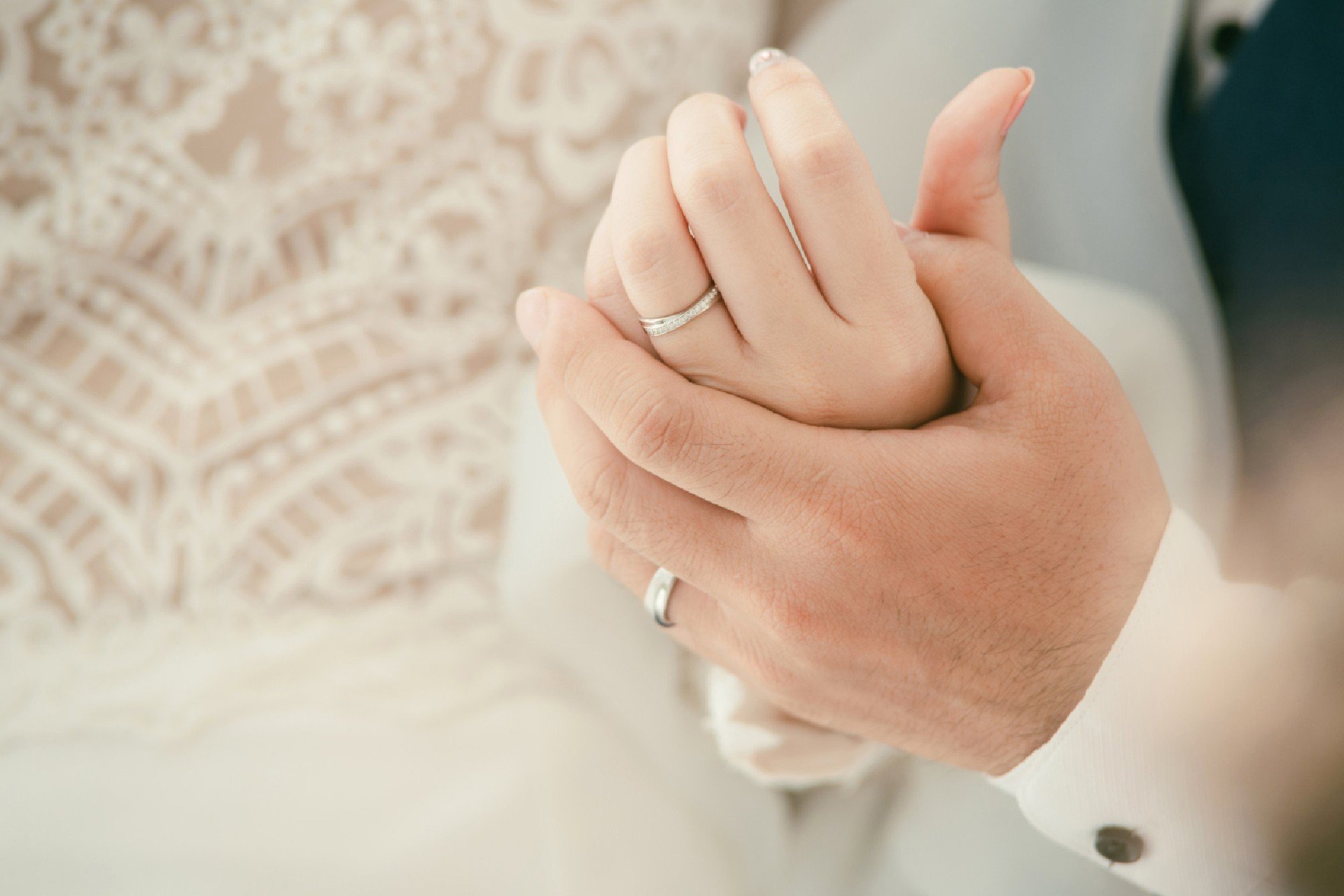


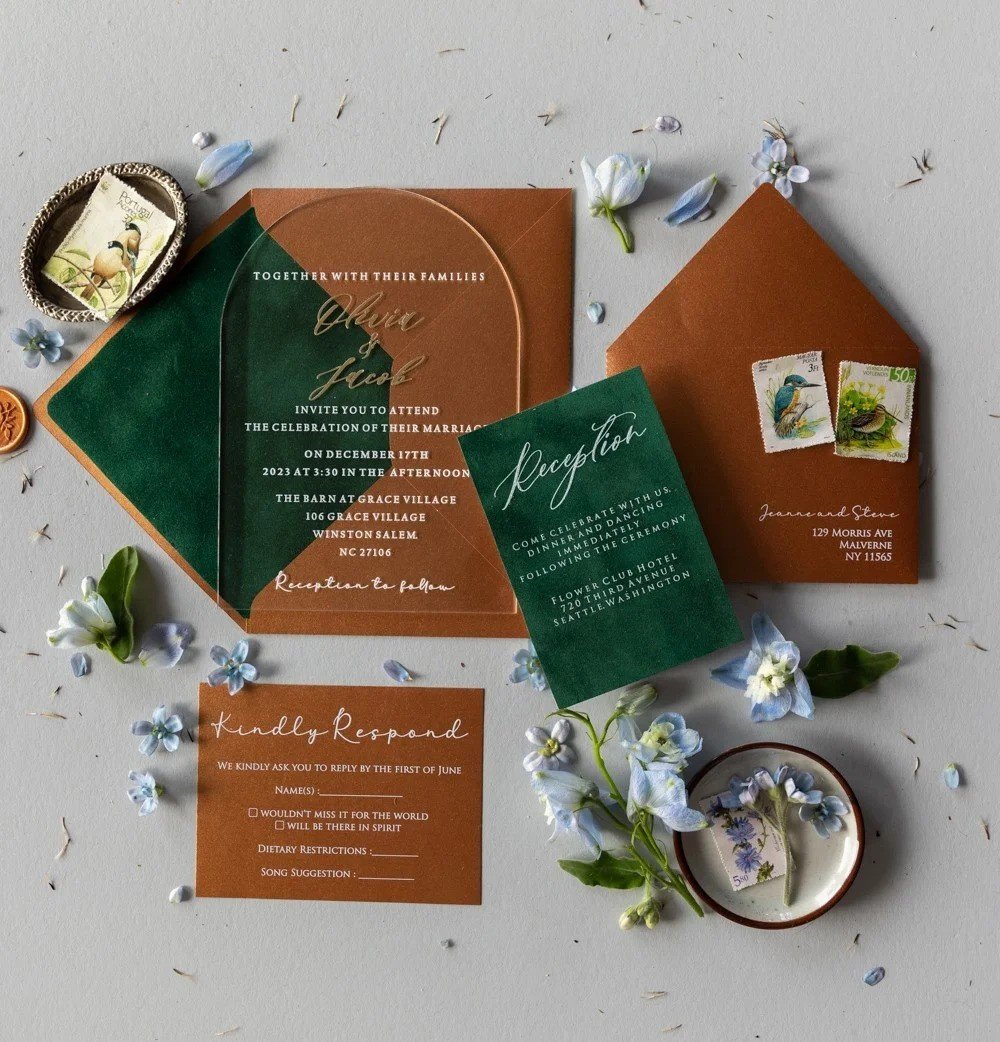
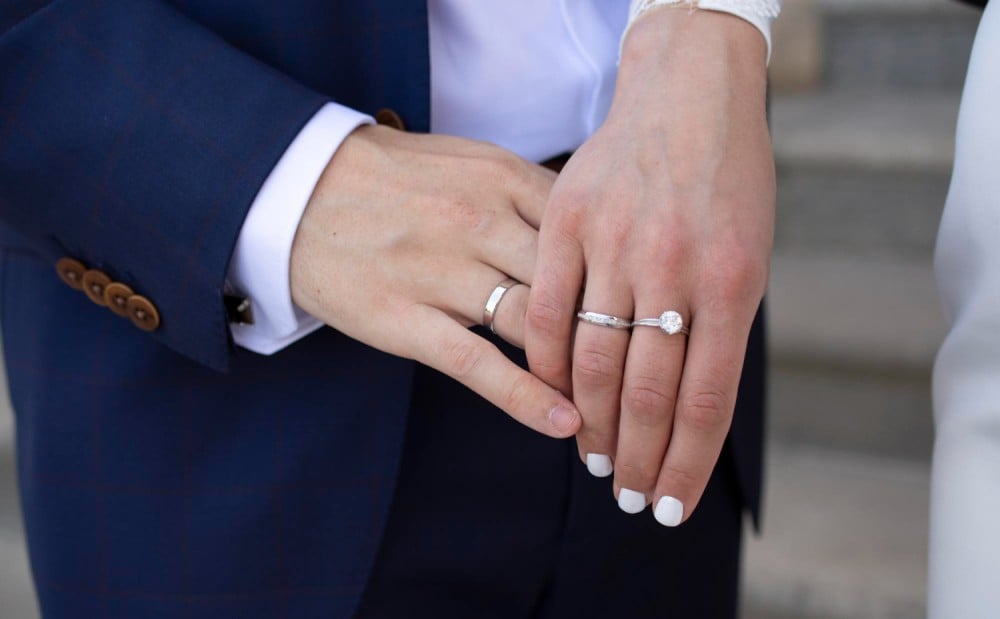

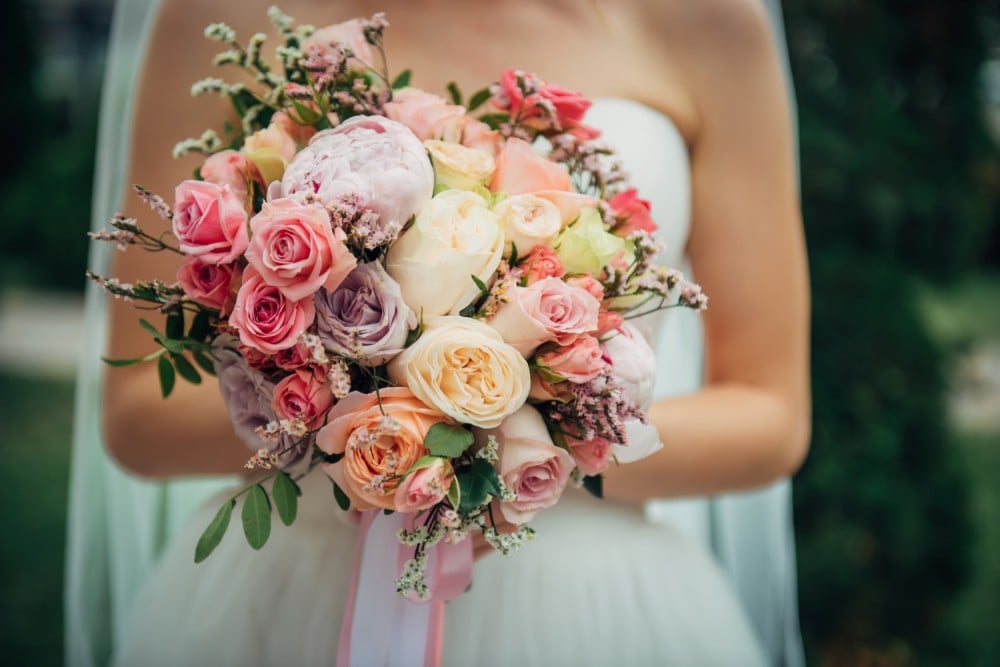
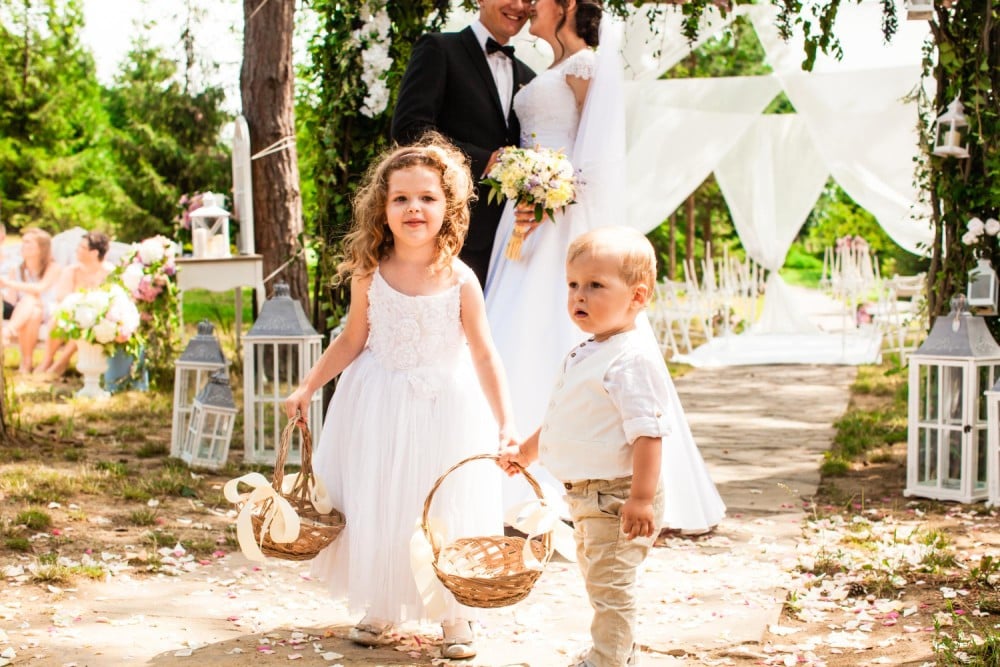

Top authors